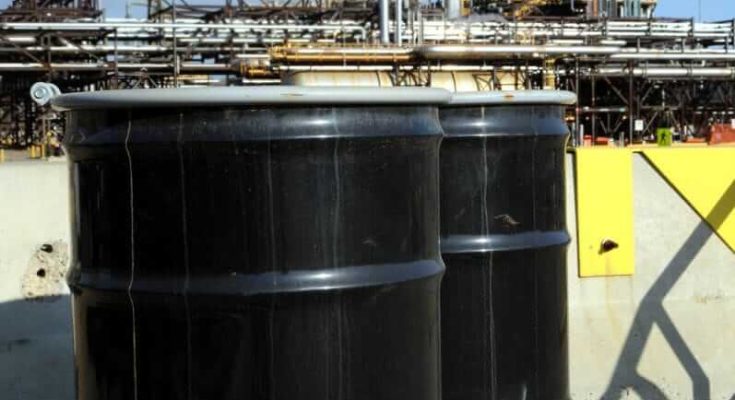November WTI crude oil (CLX25) on Monday closed down -0.02 (-0.03%), and November RBOB gasoline (RBX25) closed down -0.0075 (-0.41%).
Crude oil and gasoline prices settled slightly lower on Monday, with crude posting a 5.5-month low. Strength in the dollar on Monday weighed on crude prices. Crude is also being undercut by negative carryover from last Thursday, when President Trump said he’ll meet with Russian President Putin to discuss ending the war in Ukraine, which raises the possibility of increased Russian oil supply.
-
Nat-Gas Prices Soar on a Cooler Late-Month US Weather Forecast
-
Crude Under Pressure on Prospects of a Global Supply Glut
-
Tired of missing midday reversals? The FREE Barchart Brief newsletter keeps you in the know. Sign up now!
Losses in crude were limited on Monday as US-China trade tensions eased, which is supportive for global growth prospects and energy demand, after President Trump said on Sunday that things “will be fine” with China.
Also, stronger-than-expected Chinese economic news on Monday was supportive for energy demand and crude prices. China Q3 GDP rose +1.1% q/q and +4.8% y/y, stronger than expectations of +0.8% q/q and +4.7% y/y. Also, China’s Sep industrial production rose +6.5% y/y, stronger than expectations of +5.0% y/y.
Concerns about a global supply glut are a major bearish factor for crude prices. Last Tuesday, the IEA forecast a record global oil surplus of 4.0 million bpd for 2026.
Cooling tensions in the Middle East have reduced some of the risk premium in crude prices, weighing on crude as it decreases the likelihood of disruptions to the region’s crude supplies following the ceasefire agreement between Israel and Hamas.
A decrease in crude oil held worldwide on tankers is bullish for oil prices. Vortexa reported Monday that crude oil stored on tankers that have been stationary for at least seven days fell by -12% w/w to 78.44 million bbl in the week ended October 17.
Crude prices found support after OPEC+ on October 5 agreed to a 137,000 bpd increase in its crude production target, starting in November, which was less than market expectations of a potential 500,000 bpd boost to production. OPEC+ is in the midst of boosting output by a further 1.66 million bpd to fully reverse the 2.2 million bpd production cut seen in early 2024. OPEC’s September crude production rose by +400,000 bpd to 29.05 million bpd, the highest in 2.5 years.
Reduced crude exports from Russia are supportive of oil prices. Ukraine has targeted at least 28 Russian refineries over the past two months, exacerbating a fuel crunch in Russia and limiting Russia’s crude export capabilities. Ukrainian drone and missile attacks on Russian refineries and oil export terminals have curbed Russia’s total seaborne fuel shipments to 1.88 million bpd in the first ten days of October, the lowest average in over 3.25 years.



